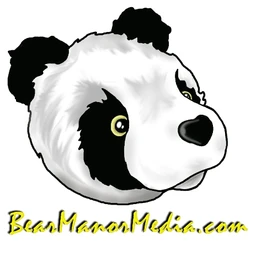BearManor Interview with Brian Anthony, editor of The Charley Chase Scrapbook
Q: Tell us a little about Charley Chase.
BA: Charley Chase is the most underrated of the truly great comedians of the silent and early sound era. He worked on over 400 films in various capacities, as a writer, producer, director, and actor. Chase was a major force in shaping the evolution of motion picture comedy, and he accomplished all of this before his death at the early age of forty-six. A truly remarkable man, and an incredible talent.
Q: How did you first discover him?
BA: Like many kids in the 1960’s, my introduction to Charley Chase was through the Robert Youngson silent comedy compilations. Youngson devoted a lot of screen time to Chase in “The Four Clowns,” and I was hooked. Blackhawk Films sold 8mm and 16mm prints for the home movie market and offered a number of Chase films. Eventually I purchased all the titles that they had available.
Q: The film compilations featured other comedians including Charlie Chaplin, Buster Keaton, Laurel and Hardy, and others. What was special about Charley Chase?
BA: I suppose it began out of curiosity. There were a number of books on the other comedians. William K Everson, Kalton Lahue, Sam Gill and other writers covered them extensively. But there was almost no information available on Chase. Leonard Maltin provided the only material that was available, but it was primarily about the films. Charley Chase the person remained something of a mystery.
Q: And this interest led to writing a book.
BA: Yes. In addition to collecting the films, I began tracking down and interviewing a number of Chase’s surviving co-stars and co-workers. This would have been in the early 1980s. Hal Roach was healthy and alert and enthusiastically talked about Charley, so I was fortunate in gathering a lot of first hand information. I hooked up with another Chase enthusiast, Andy Edmonds, and we agreed to collaborate on a book. Andy’s research followed a different path than mine, she had tracked down Charley’s daughter and other family members, so our areas of research complemented one another. After more than ten years of research our book Smile When the Raindrops Fall came out in 1998.
Q: Which brings us to “The Charley Chase Scrapbook.” How is this different than the first book?
BA: The first book was a biography of Charley Chase and an examination of his films. The Charley Chase Scrapbook tells his story in visual terms through family photos and letters, as well as stills, posters and lobby cards.
Q: There’s a lot of unique material in the scrapbook. How did you locate the family photos and papers?
BA: Charley’s daughter June was a sweetheart, and unfailingly generous with her reminiscences and family material. But it was Chase’s grandson, Charley Preshaw, who possessed an incredible trove of Chase-related photos and papers, which had been saved by his mother Polly. Polly died in 1957, and Charley stored these boxes of material in his basement. They remained untouched for decades until I visited him in San Jacinto and we rummaged around and discovered them. By the way, Charley Preshaw’s nickname since childhood was “Hoagy,” so for the sake of clarity going forward I’ll refer to him as such. Hoagy’s brother Paul was nicknamed “Pixie,” and Pix was also very helpful and generous with the material he had. It was Pix that contributed the “General Information Book,” a hand-written journal of jokes, songs, and comedy skits created by Chase in 1911, portions of which are reproduced in the scrapbook.
Q: What inspired you to do the second Chase book in a scrapbook format?
BA: In one of Hoagy’s boxes there was a leather cover and about eight pages that had been part of one of Charley Chase’s own scrapbooks. So I though it would look and feel more personal to present the material in that fashion. The cover of the book is a reproduction of the actual scrapbook’s leather covering, and the eight surviving pages were reproduced in their entirety. There were even a couple of vintage blank pages, which we used as the background for the additional pages we created. We then took the hundreds of photos, letters, drawings and documents and laid them out graphically to tell the story, in scrapbook fashion.
Q: Who are “we?”
BA: I had a lot of help with this. Hoagy still had his material in San Jacinto, and I visited there for a weekend to re-photograph everything digitally and in high resolution. Pixie and Andy Edmonds contributed more material. I re-photographed my personal 40-year collection of stills, lobbies and posters. Film historian Ed Watz contributed rare photos and a tremendous amount of information on Chase’s later years at Columbia Pictures.
Q: How do you design a scrapbook for publication?
BA: My great friend Bill Walker is an accomplished author and graphic artist. Bill has created book designs for authors including Ray Bradbury, Richard Matheson, Dean Koontz and Stephen King. So I approached him about the Chase project and he agreed to take it on. Bill has an incredible visual sense, and laid out the graphics to their best advantage.
Q: How did you find BearManor as a publisher?
BA: The Charley Chase Scrapbook had been briefly self-published in 2015, but our printer went out of business and it has long been out of print. I have been reading BearManor’s books for years, and loved how they will publish incredibly eclectic biographies, providing they are well-written. I reached out to Ben Ohmart, and Ben enthusiastically agreed to print the Chase book, as well as our scrapbooks on Harry Langdon and Forrest J Ackerman. All around it has been a great experience.
